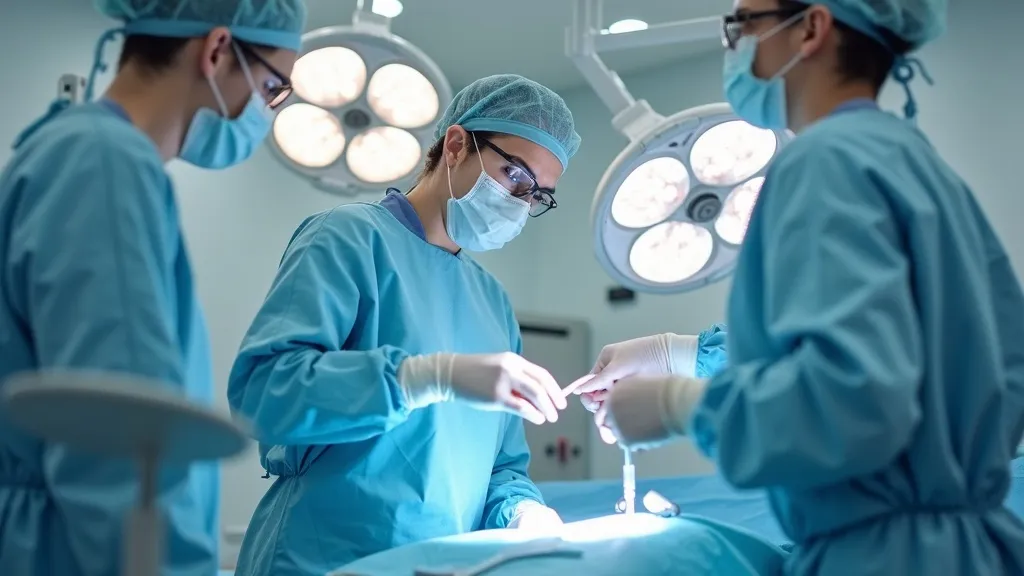Understanding Abdominoplasty and Liposuction
This article delves into the intricacies of abdominoplasty and liposuction, two prominent cosmetic surgical procedures aimed at body contouring. Abdominoplasty, commonly known as a tummy tuck, focuses on removing excess skin and fat from the abdomen, while liposuction targets fat removal from specific body areas. Both procedures offer transformative results, enhancing physical appearance and boosting self-confidence.

Introduction to Cosmetic Surgery
In the realm of cosmetic surgery, abdominoplasty and liposuction stand out as two of the most sought-after procedures. These surgeries are designed to enhance body contours, addressing areas that often resist traditional methods of weight loss and exercise. While both aim to improve the body's aesthetic appeal, they serve different functions and are suitable for different candidates. The desire for cosmetic enhancement is driven by various factors, including societal standards, personal aspirations, and the pursuit of confidence and self-esteem. Understanding the nuances between these procedures is crucial for anyone considering surgical options for body enhancement.
What is Abdominoplasty?
Abdominoplasty, more commonly known as a tummy tuck, is a surgical procedure that removes excess skin and fat from the abdomen. It also tightens the abdominal muscles, creating a smoother and firmer profile. This procedure is particularly popular among individuals who have experienced significant weight loss or pregnancy, which can leave the abdominal area with loose skin and weakened muscles. The surgery can vary in complexity, with options ranging from a full abdominoplasty, which addresses the entire abdomen, to a mini-abdominoplasty, which targets only the lower abdomen.
The full abdominoplasty usually involves making a horizontal incision between the hip bones, allowing the surgeon to remove excess skin, tighten the underlying muscles, and reposition the navel. This comprehensive approach is ideal for individuals with extensive skin laxity. In contrast, a mini-abdominoplasty involves a shorter incision and is suited for those with less significant skin issues, focusing primarily on the lower abdomen.
Many patients report high satisfaction rates following abdominoplasty, as the results can significantly enhance one's body image and confidence. However, like any surgical procedure, it carries risks, such as scarring, infection, and complications related to anesthesia. Therefore, it is essential for candidates to have realistic expectations and ensure they are in good health before undergoing surgery.
Understanding Liposuction
Liposuction is a technique that involves removing fat deposits from specific areas of the body, such as the thighs, hips, buttocks, abdomen, arms, or neck. By suctioning out fat, liposuction helps sculpt and refine the body's shape. Unlike abdominoplasty, liposuction does not address skin laxity or muscle tightening, making it ideal for individuals with good skin elasticity and muscle tone. It is particularly effective for patients who are close to their ideal weight but struggle with localized fat deposits that do not respond to diet and exercise.
Various liposuction techniques exist, including tumescent liposuction, where a solution containing saline, lidocaine, and epinephrine is injected into the targeted area to reduce bleeding and pain. Other methods, like ultrasound-assisted liposuction and laser-assisted liposuction, utilize energy to liquefy fat cells before removal, allowing for a more precise sculpting effect.
Recovery from liposuction is generally quicker than that of abdominoplasty, with most patients returning to normal activities within a few days to a week. However, the results can vary based on factors such as the amount of fat removed, the areas targeted, and the patient’s adherence to post-operative care instructions. Maintaining a healthy lifestyle is crucial to ensure the longevity of the results, as liposuction does not prevent future weight gain.
Comparing Abdominoplasty and Liposuction
| Aspect | Abdominoplasty | Liposuction |
|---|---|---|
| Purpose | Removes excess skin and tightens muscles | Removes fat deposits |
| Ideal Candidates | Individuals with loose skin post-pregnancy or weight loss | Individuals with localized fat deposits |
| Recovery Time | Several weeks | A few days to a week |
| Results | Improved abdominal contour, tighter muscles | Sculpted body areas, reduced fat |
| Anesthesia Type | General anesthesia typically required | Local anesthesia or sedation often sufficient |
| Scarring | Visible scarring along the incision line | Minimal scarring from small incisions |
| Duration of Procedure | 2 to 5 hours depending on complexity | 1 to 2 hours depending on areas targeted |
Choosing the Right Procedure
Deciding between abdominoplasty and liposuction depends largely on individual goals and physical conditions. Those seeking a flatter and more toned abdomen might benefit more from a tummy tuck, while those looking to eliminate stubborn fat in specific areas may find liposuction more suitable. Additionally, personal health history, skin quality, and lifestyle factors play a significant role in determining the appropriate surgical option.
Before making a decision, candidates should have a thorough consultation with a board-certified plastic surgeon. This discussion should encompass medical history, aesthetic goals, and realistic expectations regarding outcomes and recovery. The surgeon will assess the patient's physical condition, including skin elasticity and fat distribution, to recommend the most beneficial procedure.
It is also essential to consider the long-term implications of each procedure. For instance, patients should understand the importance of maintaining a healthy lifestyle post-surgery to ensure the longevity of their results. Weight fluctuations can alter the outcomes of both surgeries, especially if significant weight gain occurs after liposuction.
Ultimately, the decision should be informed, considering both physical and emotional aspects. A supportive environment, including consultation with friends and family, can also aid in making a well-rounded choice.
FAQs
- Is abdominoplasty a weight loss procedure? No, abdominoplasty is not designed for weight loss but for contouring and tightening the abdominal area. It is best suited for individuals who are already at or near their ideal weight but wish to improve the appearance of their abdomen.
- Can liposuction be performed on multiple areas at once? Yes, liposuction can target multiple areas in a single session, depending on the patient's health and surgeon's recommendations. However, there are limits to the amount of fat that can be safely removed in one procedure to minimize risks.
- What is the recovery process like for abdominoplasty? Recovery from a tummy tuck can take several weeks. Patients are advised to avoid strenuous activity during this period and may need assistance with daily tasks. Follow-up appointments are crucial to monitor healing and address any concerns.
- How long do the results of liposuction last? The results of liposuction can be long-lasting, provided the patient maintains a stable weight and healthy lifestyle. If significant weight gain occurs, new fat deposits may develop in different areas of the body.
- Are there any risks associated with these procedures? Like any surgical procedure, both abdominoplasty and liposuction carry potential risks, including infection, scarring, and complications from anesthesia. Discussing these risks with a surgeon can help candidates make informed decisions.
- How can one prepare for these surgeries? Preparation may include lifestyle changes such as quitting smoking, maintaining a healthy diet, and exercising regularly. The surgeon may also provide specific pre-operative instructions to ensure optimal surgical outcomes.
- What are the costs associated with abdominoplasty and liposuction? Costs can vary widely based on factors such as geographical location, surgeon’s expertise, and the complexity of the procedure. It’s essential to consult with the surgeon regarding the total cost, including anesthesia, facility fees, and post-operative care.
Conclusion
Both abdominoplasty and liposuction offer significant benefits, enhancing one's physical appearance and self-esteem. Consulting with a certified plastic surgeon can provide valuable insights tailored to individual needs, ensuring the chosen procedure aligns with personal health and aesthetic goals. As with any medical procedure, understanding the intricacies and potential outcomes is crucial for a satisfactory and safe experience.
In addition to the physical benefits, many patients report psychological improvements following cosmetic surgery. The boost in confidence and self-image can lead to enhanced quality of life, improved social interactions, and greater overall happiness. It’s important to approach the decision for surgery with careful consideration of both the potential benefits and the risks involved.
Furthermore, the journey doesn’t end with the surgery. Post-operative care is essential in achieving the desired results. Patients should adhere to their surgeon’s guidelines regarding activity restrictions, wound care, and follow-up appointments. Support from healthcare providers, family, and friends can also play a crucial role in recovery.
Moreover, as the field of cosmetic surgery continues to evolve, advancements in techniques and technologies are enhancing the safety and effectiveness of these procedures. Continuous education and training for surgeons ensure that patients receive the best care possible, minimizing risks and maximizing results.
Ultimately, whether one opts for abdominoplasty, liposuction, or a combination of both, the decision should stem from a well-informed perspective, focusing on personal goals and health considerations. As individuals embark on this transformative journey, they can look forward to a renewed sense of self, embracing the changes that come with their enhanced bodies and improved self-image.





